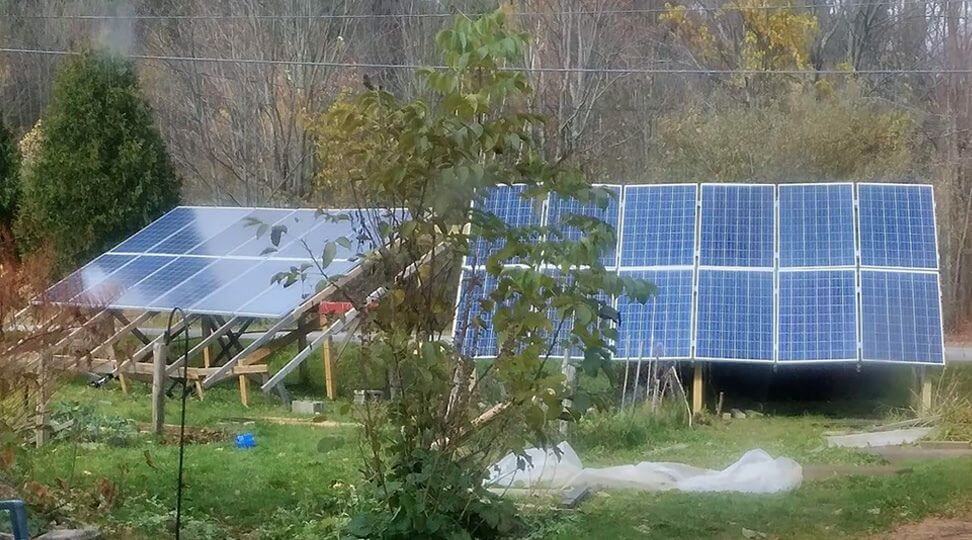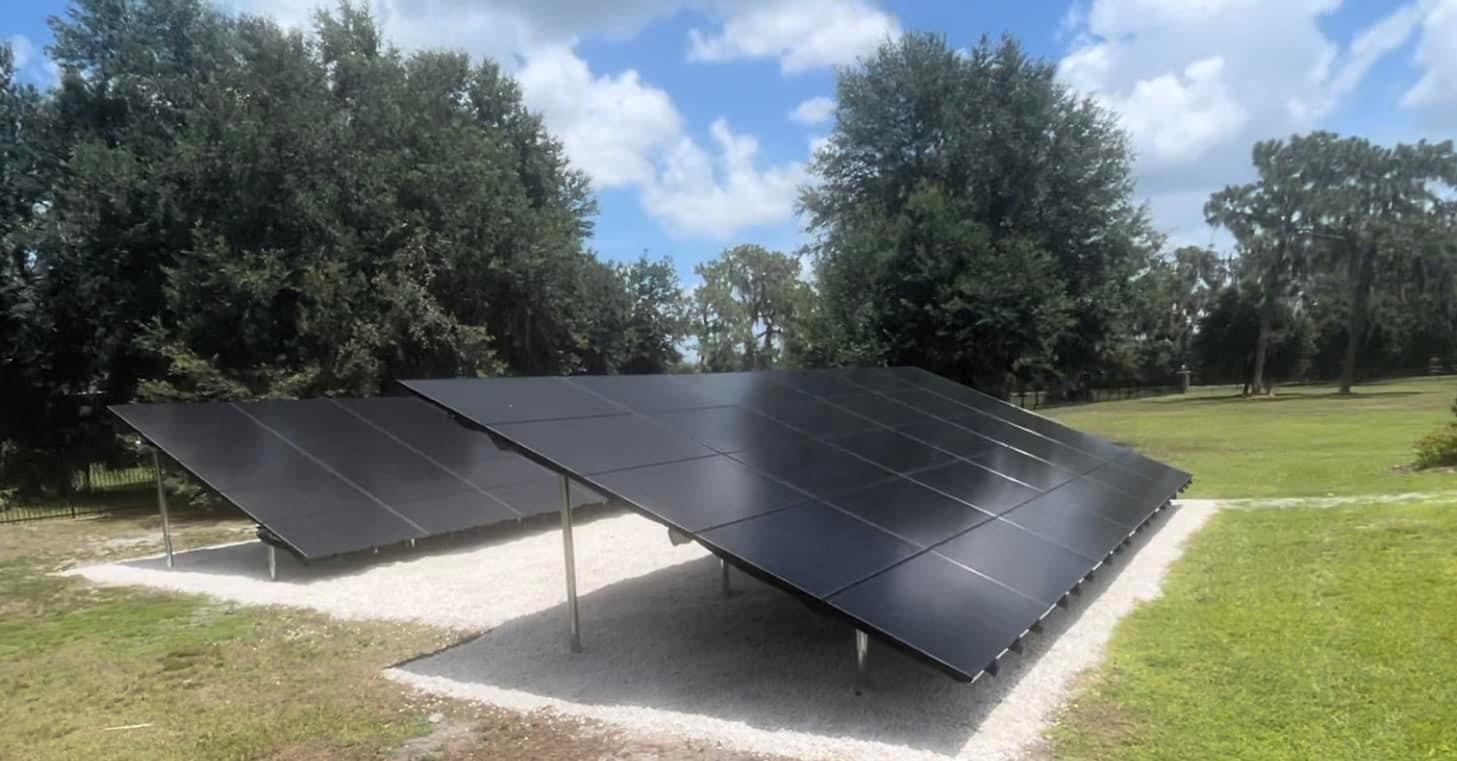
How To Clean Solar Panels Dust, Dirt And Snow
Table of Contents
- Why Clean Your Solar Panels?
- How Often Should You Clean Your Solar Panels?
- How To Clean Solar Panels?
- How Do I Clean Snow From Solar Panels?
- What Is The Best Thing To Clean Solar Panels With?
- Benefits of Cleaning Solar Panels
- Recommendations For Keeping Solar Panels Clean
- Common Mistakes to Avoid
- DIY vs. Professional Cleaning
To clean your solar panels, the first thing you need to do is power your system off. After that, manually remove any dust or debris with soap and water. A sponge or rag can be used to clean the panel. Make sure to not use any harsh materials or solvents when cleaning your solar panels because they could damage the solar panel's surface. Most of the time simply hosing down your solar panels with a garden hose will do the job.
Solar panels are an awesome way of capturing power from our closest star. It's truly impressive that we have the technology here on Earth that can capture energy from a nuclear furnace that is 96 million miles away. Knowing that fact may make it shocking to find out that just a few microns of dust and grime on your solar panels can interfere with and even totally shut down that process.
When dust, dirt, and snow build up on your solar panels, it can bring your off-grid system to a halt. For this reason, it's crucial to know how to clean your solar panels. Cleaning your solar panels regularly will ensure that they operate at their peak efficiency.
Interested in building your own simple solar system at home or a full on DIY Solar System? Check out our other articles for more details!
In this article, we will go over how to clean the dust, dirt, and snow off of your solar panels. We’ll also provide some basic dos and don'ts to help keep you on the right path.
Why Clean Your Solar Panels?
Solar panels convert sunlight into electricity, but even a thin layer of dust, dirt, or snow can significantly reduce their efficiency. Google's study on their 1.6 MW solar farm in California found that regular cleaning can nearly double electricity production. Clean solar panels produce 5% to 25% more energy, making maintenance crucial for optimal performance.
In the study, the solar panels were left to accumulate debris for 15 months straight. After this period, Google engineers cleaned the panels. Electricity production nearly doubled.
How Often Should You Clean Your Solar Panels?
Solar panels typically need cleaning every 6 to 12 months. Regular inspection and monitoring of their electrical output can help determine if cleaning is needed more frequently. If you live in an area with regular rain, it might naturally clean your solar panels, but it's still wise to check periodically for any grime buildup.
If you live in an area that gets a regular amount of rain, then you may be able to just allow the rain to clean your solar panels. It's important to keep in mind, however, that you should not simply rely on this. Even if you live in a rainy climate, you should still go up there to make sure grime isn't building up on your solar panels.
If you have a microinverter system, then it's a lot easier to find out which solar panel is dirty. All you have to do is check the power output of the solar panels. If they are in the same amount of sunlight and facing the same way, yet one is outputting less power, chances are it's dirty.
How To Clean Solar Panels?
- Power Off the System: Ensure your system is turned off before you start cleaning.
- Remove Dust and Debris: Use soap, water, and a garden hose to wash away dirt and grime. Avoid using high-pressure, harsh materials, or solvents that could damage the panels.
- Use Proper Tools: A sponge, rag, or squeegee is ideal for cleaning. Gently wipe the panels to remove excess water after washing.
- Cleaning Snow: Use a soft brush to remove snow. Avoid scraping ice, as this can damage the panels. Allow the remaining ice to melt naturally.

How Do I Clean Snow From Solar Panels?
Tips for Effective Cleaning
- Avoid Temperature Shock: Clean panels early in the morning or late in the evening to prevent cracking from sudden temperature changes.
- Use Soft Water: Mineral-rich or hard water can damage panels over time. Use distilled water or a water softener.
- Monitor Output: Keep an eye on your solar energy output to detect any performance drops that might indicate dirty panels. If you dont already have set up a DIY storage and solar monitor.
Additional Considerations
- Microinverter Systems: Easily identify dirty panels by checking individual power outputs.
- Environmental Factors: If you live near an airport, major highway, or in a dusty area, expect more frequent cleanings.
- Winter Care: In colder regions, manually remove snow buildup to maintain efficiency during winter months.
What Is The Best Thing To Clean Solar Panels With?
It’s best to use a soft brush to remove any snow that accumulates on your solar panels. Use smooth, slow brushing motions to gently wipe the snow off of the solar panel's surface. Whatever you do, don't try to scrape off any ice or frozen snow as this will almost certainly damage the surface.
If any ice remains on the panel after removing the snow, allow time for the solar panel to warm back up now that it is cleared of the snow. After some time the ice that remains should melt off; which allows your panels to return to optimal efficiency.
Benefits of Cleaning Solar Panels
Dirty solar panels produce 5% to 25% less energy, which is not insignificant. Microscopic particles block light from reaching the photovoltaic cells.
Solar panels should be tilted at an angle if they are set up properly. This means that dirt, dust, grime, and other debris will build up along the frame toward the bottom. This area is often overlooked as most people simply clear the main surface of the solar panel.
Recommendations For Keeping Solar Panels Clean
- Keep an eye on your solar energy output. If you never know what your normal power levels are, it will be hard to tell when they are not normal.
- If you think your solar panels might be dirty but aren't sure, you can always wait until after it rains and see if your energy production increases. It's best to just go up there and check the panels, though.
- If you live in a colder region, you will have to manually shake off any snow that builds up on your solar panels. In these areas, solar panels get the dirtiest in wintertime.
- Solar panels should be cleaned about every 6 months. Doing it any more than this is a waste of time and any less than this won't be nearly as effective.
- If you live near an airport, a major highway, or anything like that, then you can expect your solar panels to build up junk a lot more quickly than they would otherwise.
Common Mistakes to Avoid
When cleaning solar panels, several common mistakes can lead to reduced efficiency or damage to the panels. One major mistake is using abrasive materials or harsh chemicals, which can scratch or degrade the panel surface. Another error is cleaning panels during the hottest part of the day, which can cause rapid temperature changes and lead to cracking. Failing to power off the system before cleaning can result in electrical hazards.
Also, applying high-pressure water or scrubbing too hard can damage the panels and their frames. It’s also important to avoid neglecting regular inspections, as dirt and debris can accumulate unnoticed over time, significantly affecting performance. Lastly, overlooking safety precautions, such as using stable ladders and wearing appropriate gear, can lead to accidents. Proper knowledge and care are essential to avoid these pitfalls and maintain the efficiency and longevity of solar panels.
DIY vs. Professional Cleaning
Cleaning solar panels yourself (DIY) can be cost-effective and convenient, especially for small installations that are easily accessible. DIY cleaning allows homeowners to maintain a regular cleaning schedule without recurring costs. However, it requires time, effort, and a basic understanding of the process to avoid damaging the panels. On the other hand, hiring professional cleaning services can ensure a thorough and safe cleaning, particularly for larger or hard-to-reach systems.
Professionals use specialized equipment and techniques to clean panels efficiently, minimizing the risk of damage. The downside is the added expense and the need to schedule appointments. Ultimately, the choice between DIY and professional cleaning depends on the size of the installation, accessibility, budget, and personal preference for maintenance.
Conclusion
Dust, dirt, snow, and other debris can wreak havoc on your energy output as it builds up on your solar panels. In fact, if your solar panels get dirty enough, they will stop producing energy altogether. This is why it’s so important to know how to clean solar panels. Cleaning your solar panels on a regular basis makes it so that your system is always performing at its best.
Cleaning solar panels is simple. The first step is to power off the system. If it's a hot summer day, you may want to wait a while to let your solar panels cool because you add water. This is to avoid temperature shock which could crack the solar panels. If hosing off the solar panels wasn’t enough, then use soap and water and some sort of sponge or rag to manually remove any dust or debris that is clinging to the surface of the solar panels. Don’t use harsh materials or other solvents because they can permanently damage the solar panel’s surface.
We hope this article helped you learn everything you wanted to know about how to clean your solar panels and remove dust, dirt, and snow. Thanks for reading!


